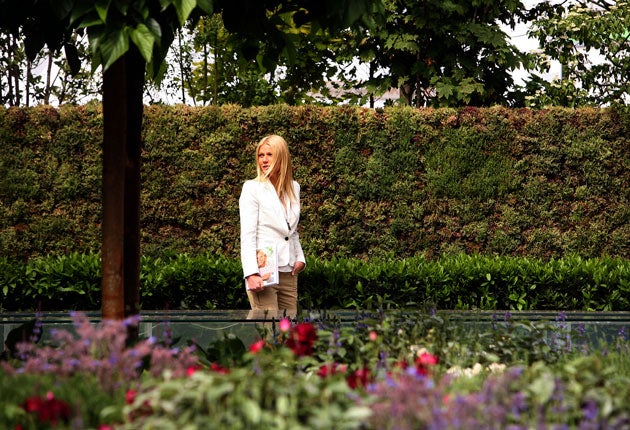Dig for victory: how your garden can help beat climate change

Your support helps us to tell the story
From reproductive rights to climate change to Big Tech, The Independent is on the ground when the story is developing. Whether it's investigating the financials of Elon Musk's pro-Trump PAC or producing our latest documentary, 'The A Word', which shines a light on the American women fighting for reproductive rights, we know how important it is to parse out the facts from the messaging.
At such a critical moment in US history, we need reporters on the ground. Your donation allows us to keep sending journalists to speak to both sides of the story.
The Independent is trusted by Americans across the entire political spectrum. And unlike many other quality news outlets, we choose not to lock Americans out of our reporting and analysis with paywalls. We believe quality journalism should be available to everyone, paid for by those who can afford it.
Your support makes all the difference.The Royal Horticultural Society (RHS) throws open the gates of the Chelsea Flower Show today with a message for Britain's gardeners: the humble urban backyard can help save the planet.
It's something that keen horticulturalists have always suspected, but for the first time, the RHS has brought together all the published evidence in a scientific review entitled Gardening Matters: Urban Gardens.
Collating the evidence reveals four key areas in which gardens make a difference. They help control urban temperatures, mitigating the effects of extreme heat and cold. They help prevent flooding by absorbing rainwater that would otherwise overload drainage systems. They support human health by easing stress and providing physical exercise. And they have effectively become some of Britain's nature reserves, supporting a range of wildlife including birds, mammals and invertebrates.
There is growing evidence that some declining species, once common in low-intensity farmland, are now more abundant in urban areas. These include the song thrush, the common frog and hedgehogs. One study found that in Sheffield's domestic gardens, the density of birds was six times that of the nation as a whole.
Dr Tijana Blanusa, who led the RHS science review, said: "Domestic gardens contain approximately 25 per cent of the total non-forest and woodland trees [in the UK] and can contribute as much as 86 per cent of the total urban tree stock. This review opens the debate about how urban domestic gardens can be protected, enhanced and exploited to ensure urban quality of life, as well as offering some first steps that gardeners can take to support the ecosystem of their town and city."
Of course, there are potentially negative environmental impacts associated with gardening – the use of power tools uses energy, and water use is rising every year. However, the RHS believes that a good understanding of how gardens help the environment can maximise the positive impact of horticulture.
One way of doing this is to look for plants that offer multiple uses, says Dr Blanusa. Trees, for example, are particularly good as they take up water, capture pollution, offer shade and a habitat for wildlife, and add aesthetic value to the garden. We may not all have room for an oak tree, but there are smaller trees such as rowans that can easily be incorporated into smaller gardens.
Leigh Hunt, principal horticultural advisor at the RHS, said: "Most people look at their own small urban garden and think it can't possibly make that much difference to the environment. But put it together with all the other gardens around and it provides a mini nature reserve. It's a collective effort.
"From a psychological point of view, a garden offers creative control that may be missing in other areas of life. Strenuous chores such as raking help physical fitness – there is even research that suggests attention-deficit disorder children benefit from being in green spaces."
The psychophysiological benefits add up to more than just some vague feel-good factor. According to research, they include improved cognitive function, reduced incidence of illness or reported illness, improved relaxation, pain relief and the ability to cope with trauma.
Ivy: a versatile plant
* A common misconception, says Leigh Hunt, the RHS's principal horticultural adviser, is that ivy is bad for buildings. In fact, a study commissioned by English Heritage and carried out by researchers at Oxford University found that a covering of ivy can actually protect walls and reduce the effects of pollution.
Ivy can help reduce heat loss by an average of 15 per cent in cold weather, and can cool the surface temperature in hot weather by around 36 per cent. Its glossy evergreen leaves look good all year round, and its thick network of stems offers nesting sites for small birds.
As with all plants, its network of roots facilitates the absorption of water into the soil, and because it grows vertically, it's a good choice where space is at a premium. It requires little maintenance in terms of pruning and is fairly disease-resistant.
Join our commenting forum
Join thought-provoking conversations, follow other Independent readers and see their replies
Comments